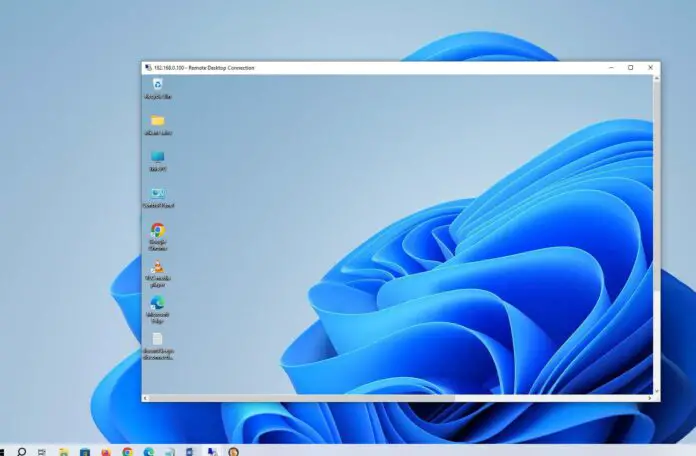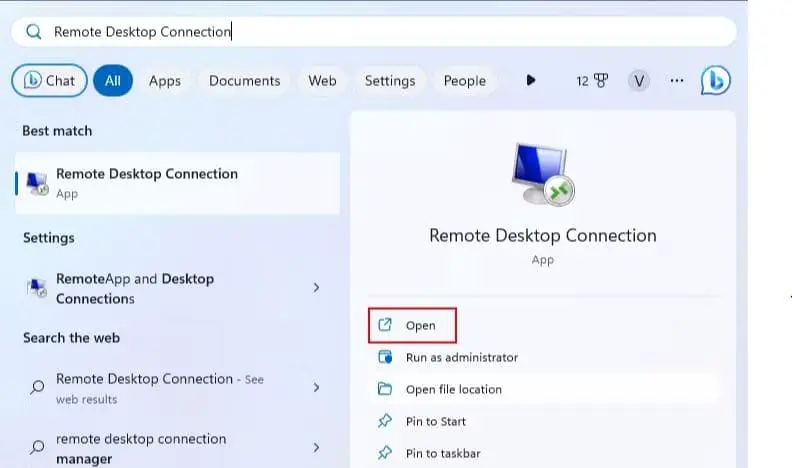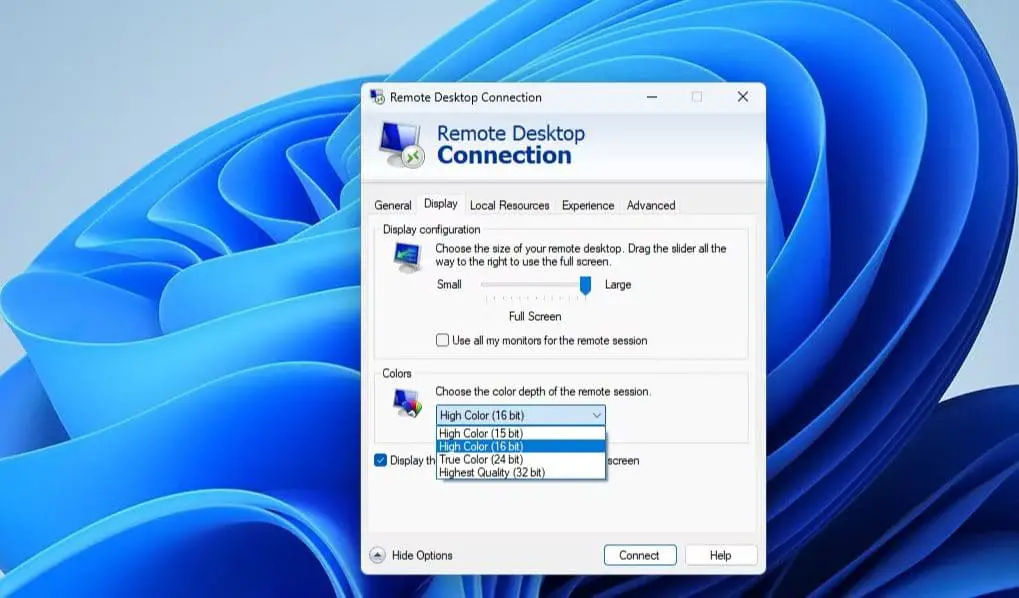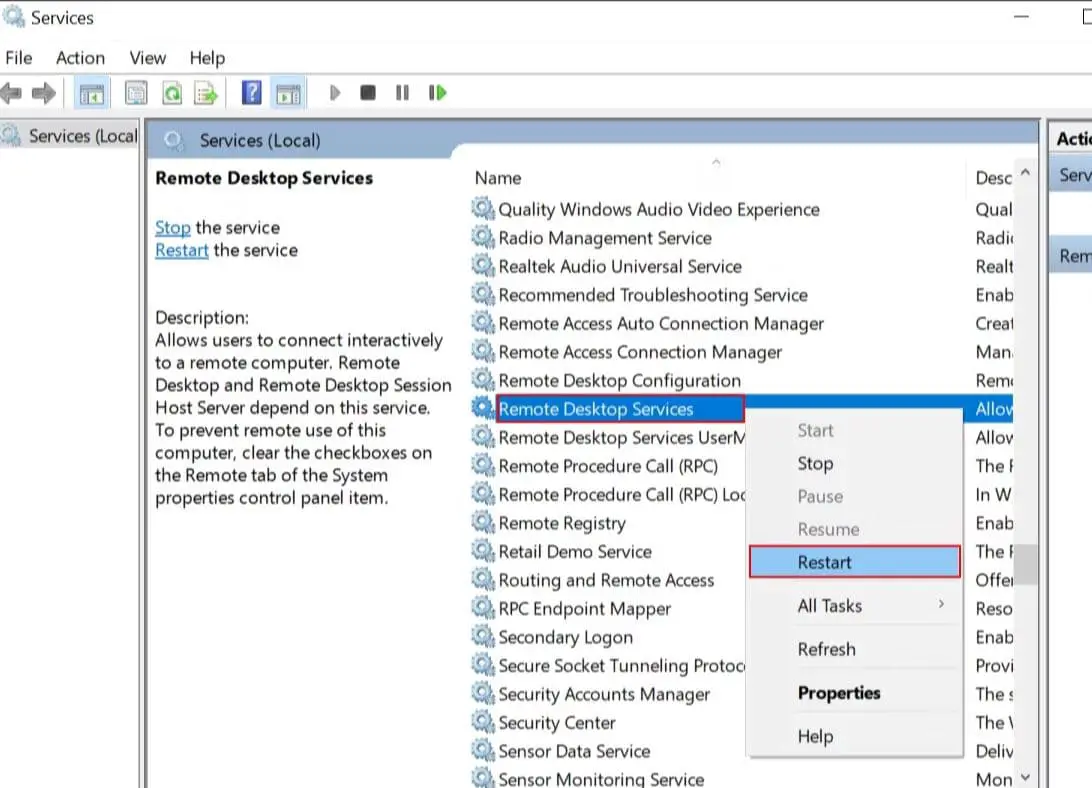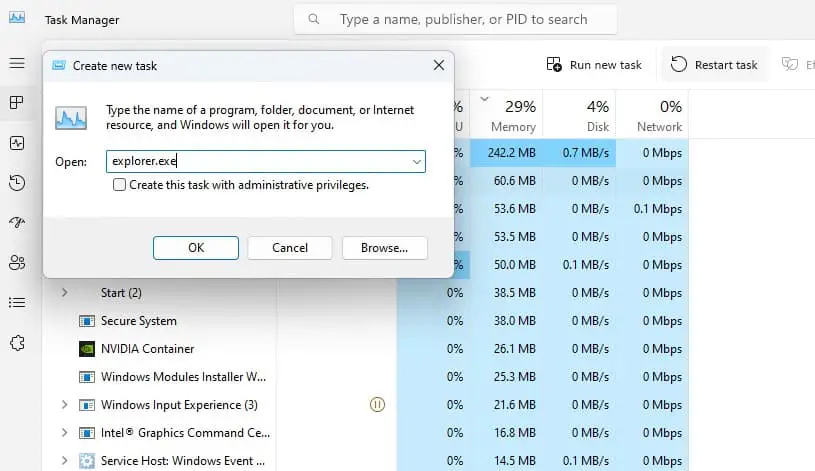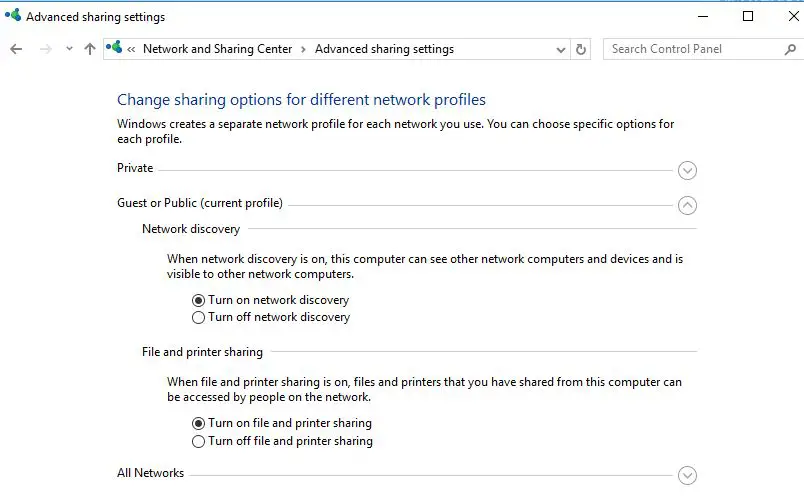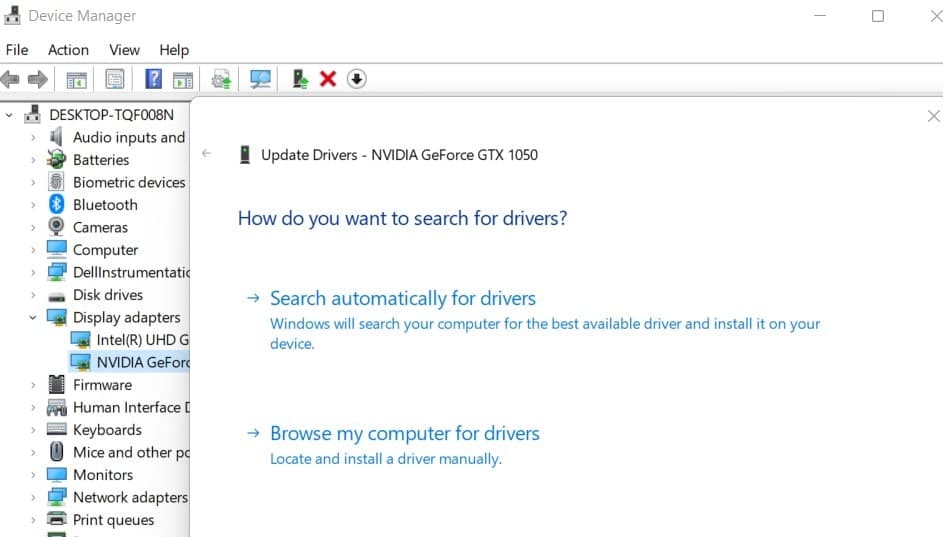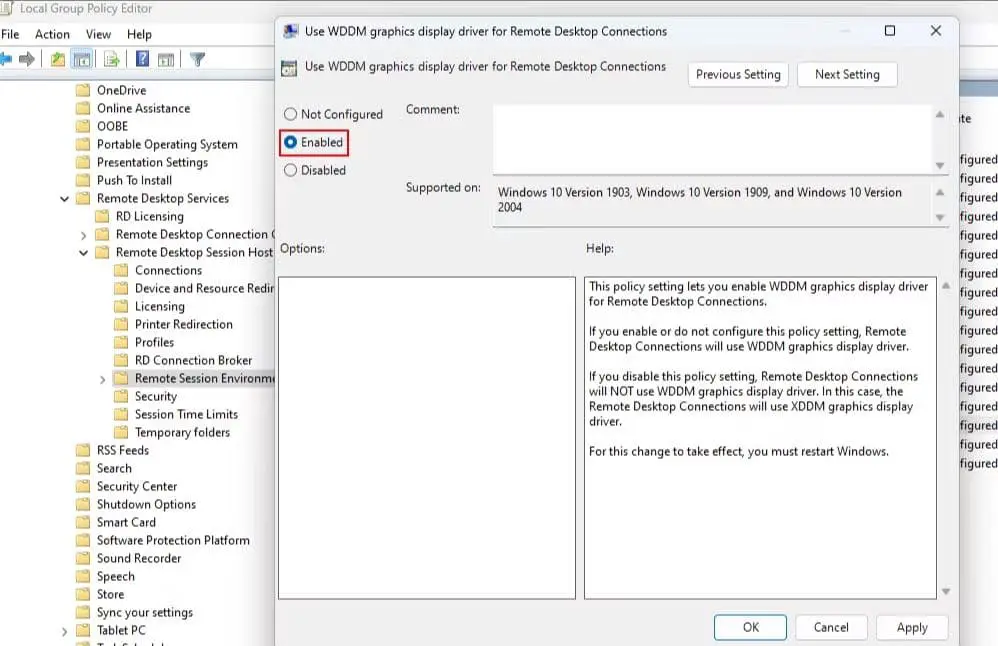Remote Desktop Connection(RDP) is a useful feature exclusively available for pro and enterprise editions of Windows 11/10. This allows you to access and control another computer remotely without installing any third-party software. However, sometimes you may encounter a black screen when you try to connect to a remote computer using Remote Desktop in Windows 11. Users reported encountering a frustrating issue where the Remote Desktop connection displays a black screen. Several factors may contribute to this error, incorrect remote desktop settings, outdated graphics drivers, security software blocking or compatibility issues are common. Here is How to Fix a Remote Desktop Black Screen on Windows 11 or 10 and get your visuals back.
Remote Desktop Black Screen Windows 11
Several factors can cause the black screen issue when using Remote Desktop in Windows 11.
Incompatible or outdated graphics drivers are the primary reasons lead to display problems during Remote Desktop sessions. Again Differences in resolution and color depth between the local and remote machines can result in a black screen.
Sometimes, Unstable or poor network connections can cause disruptions, leading to a black screen during Remote Desktop sessions, or there may be security software blocking Remote Desktop connection.
Problems with the Remote Desktop service on either the local or remote machine or Some Windows settings, such as fast startup, shadow play, or explorer.exe, may conflict with the Remote Desktop feature and cause the black screen issue.
Depending on the cause of the problem, there are different ways to fix the Remote Desktop black screen issue in Windows 11. Here are some of the methods that you can try.
Change the Screen Resolution
One of the simplest ways to fix the remote desktop black screen issue is to change the screen resolution of the remote session. Sometimes, the default resolution may be too high or too low for your monitor and cause the black screen issue
A mismatch between the display settings of the local and remote machines can lead to a black screen.
To change the screen resolution, follow these steps:
- On your local computer, open the Remote Desktop Connection app by typing “Remote Desktop Connection” in the search box and clicking on the top result.
- Click on “Show Options” to expand the settings menu.
- Go to the “Display” tab and adjust the slider under “Resolution” to a lower or higher value than the default one. For example, if the display resolution of your desktop is 1920 x 1080, you should match that in the settings.
- In addition, Under Colors, select High Color (16 bit) from the dropdown. Now Click on “Connect” to start the remote session and see if the black screen issue is resolved.
Disable Bitmap Caching
Bitmap caching is a feature that allows Remote Desktop to store images of frequently used parts of the remote session on your local computer. This can improve the performance and responsiveness of the remote session, but it can also cause some display issues, such as black screen. Let’s disable bitmap caching following the steps below and check if this helps fix the black screen in Remote desktop.
- On your local computer, press Windows key + R, type mstsc and click ok to open the Remote Desktop Connection
- Click on “Show Options” to expand the settings menu.
- Go to the “Experience” tab and uncheck the box next to “Persistent bitmap caching”.
- Click on “Connect” to start the remote session and see if the black screen issue is resolved.
Restart Remote Desktop Service
Remote Desktop Services control and enables you to connect to remote computers using Remote Desktop. Sometimes, this service may malfunction or stop working and cause the black screen issue. Let’s check and restart Remote Desktop Service to fix the problem.
- On your local computer, press Windows + R keys to open the Run dialog box.
- Type “services.msc” and click on “OK” to open the Services app.
- On the list of services, find “Remote Desktop Services” and right-click on it, Select “Restart” from the context menu and wait for the service to restart.
- Try connecting to the remote computer again and see if the black screen issue is resolved.
Relaunch Explorer.exe
Explorer.exe is a process that controls the graphical user interface of Windows, such as the desktop, taskbar, and file manager. Sometimes, this process may crash or freeze and cause the black screen issue when using Remote Desktop.
- On your local computer, press Ctrl + Shift + Esc keys to open the Task Manager.
- Find “explorer.exe” on the list of processes, Right-click on it and select “End task” from the context menu.
- Click on “Run new task” On the Create new task window, type “explorer.exe” and click on “OK”.
- Try connecting to the remote computer again and see if the black screen issue is resolved.
Check for Network Connection Issues
Again Network problems can impact Remote Desktop functionality. A poor or unstable connection can result frequent disconnects or remote desktop screen black.
- Check Wi-Fi or Ethernet connections.
- Test internet speed using tools like Speedtest.
- Restart your router or modem and reconnect your computers to the network.
- Check if your firewall or antivirus software is blocking Remote Desktop connections and allow them if necessary.
- Enable network discovery and file sharing on both your local and remote computers.
In addition, disconnect VPN (If connected) and temporarily disable the Antivirus before connecting to remote computer.
Update Graphics driver
One of the primary reasons for a black screen on Remote Desktop is outdated or incompatible graphics drivers. Graphics drivers are crucial for rendering visual elements, and outdated drivers can cause display issues. Update or reinstall the graphics driver help most users fix the black screen problem.
For Balck Screen issue, Microsoft always recommends updating the GPU drivers to resolve it
- Press Win + X and select “Device Manager.”
- Expand the “Display adapters” section.
- Right-click on your graphics card and select “Update driver.”
- Select the first option “Search automatically for drivers” and Follow the on-screen instructions to update the driver.
Alternatively, you can visit the device manufacturer to download and install the latest graphics driver on your Device. Or prefer a third-party driver update tool to update the device driver automatically.
After this restart your system and then check if you are still seeing the black screen or not.
Tweak Group Policy Editor
Group Policy is a tool that allows you to configure various settings for your computer and network. There is a specific policy setting that needs to be enabled for Remote Desktop to work properly. If this setting is disabled, it can cause a black screen issue.
- On your local computer, press the Windows + R keys to open the Run dialog box.
- Type “gpedit.msc” and click on “OK” to open the Group Policy Editor.
- Navigate to Computer Configuration > Administrative Templates > Windows Components > Remote Desktop Services > Remote Desktop Connection Client.
- On the right pane, double-click on “Turn Off UDP On Client” policy setting, Select “Enabled” option and click on “OK” to save the changes.
Now go to Remote Desktop Session Host > Remote Session Environment. Double-click the Use WDDM graphics display driver for Remote Desktop Connections option. Select or check the Enabled option to enable this policy.
- Restart your computer and try connecting to the remote computer again.
In addition, Make sure your Windows 11 is updated to the latest version. You can check it from Settings -> Windows update – Check for updates. If new updates are available, allow them to download and install. Restart your PC to apply changes, and try to connect the remote computer again.
For a few uses, Disable Fast Startup helps fix remote desktop black screen problem on Windows 11. The Fast Startup feature, helps you restart your Windows laptop or quickly wake it from hibernation.
Also read:
- The Difference Between a Remote Desktop and Remote Access
- Remote desktop not working after Windows 11 update [Solved]
- How to Enable and use Remote Desktop Connection Windows 11
- 5 Tips to Keep Remote Desktop Secure (Windows 11/10)
- Screen Goes black when playing games on Windows 10? Try these solutions
- This request was blocked by the security rules error code 15 or 16
